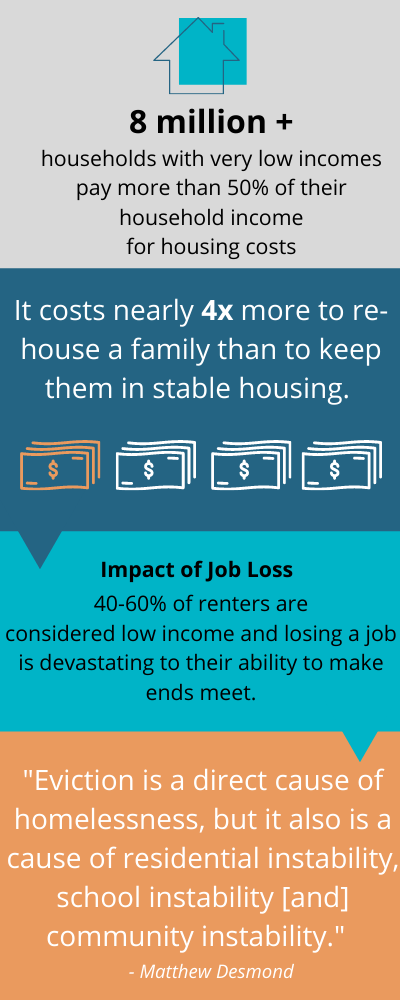
One of the most common phrases social workers use is “housing first” because without housing, clients can be difficult to locate and their homelessness can lead to a host of health, safety, and other challenges. It is extremely difficult for social workers to help someone change their situation and find a path to a better life if they are not in stable housing, which is why housing is often a social worker’s first step with a new client.
Beyond its importance to individual clients and a successful social work strategy, preventing evictions is also good for society overall. Stable housing means stable schooling for children, which is an early indicator of their future standard of living. Studies have also shown that it often costs 3-5 times as much to help re-house a family after an eviction forces them into the shelter system.
Even before COVID-19, HUD’s 2017 Worst Case Housing Needs Report to Congress found that more than 8 million households with very low incomes pay more than 50% of their household income for housing costs; leaving them unable to pay for child care, medicine, transportation, food, and other basic needs. The report also found that for extremely low income households – those which make less than 30% of the median income – there are only 33 affordable units available for every 100 families who need them.
Combining the shortage of affordable housing with the fact that 40-60% of renters are considered low income, it’s clear the housing situation in the U.S. puts many households at an increased risk of homelessness. For many it just takes one unexpected expense – such as a car breakdown, reduced work hours, or medical problem – to put their housing at risk. NeighborRelief aims to prevent evictions and reduce homelessness in the U.S. by providing a solution that allows donors to contribute directly to a qualified neighbor’s rent.

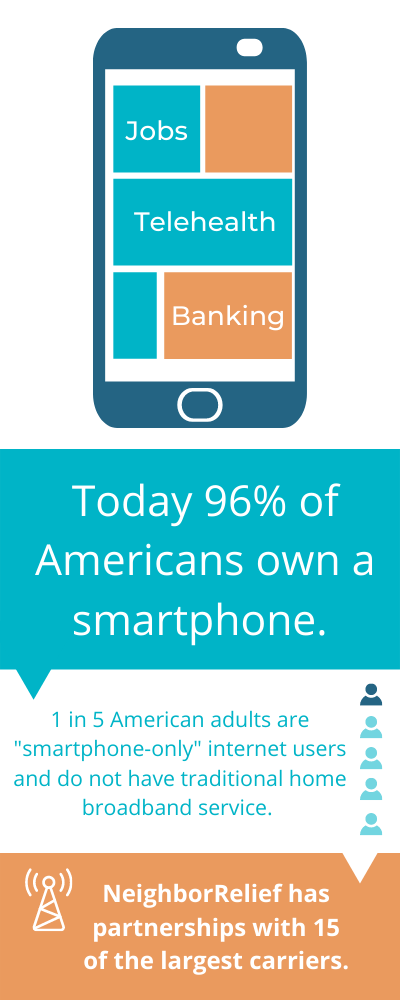
While it may not be immediately apparent, mobile phones are now considered to be a critical basic need. Over the past few decades mobile phones have gone from being nice-to-have to being an absolute necessity. According to the Pew Research Center, the number of Americans who own a smartphone has increased from 35% in 2001 to 96% today.
For many low-income Americans, smartphones are their sole source of communication and internet access. Smart phones are critical to their ability to apply for jobs and interview with employers, call a doctor, conduct banking, learn, work remotely, reach help in an emergency, locate resources and much more. Furthermore, they very rarely have a computer or tablet on which they can rely if their phone service is disconnected.
Many social workers consider smartphones to be critical to someone’s ability to succeed in an increasingly digital world. There is even some debate about what is more important between housing and a phone. In a homeless situation, if someone at least has a phone they are reachable by nonprofit staff, loved ones and others who can help them.
Having and maintaining service has a profound impact on a person’s livelihood and stability, which is why we have included mobile phone service as a category of need on NeighborRelief. Through a partnership T-Cetra, we are positioned to support phone bill payments with over 50 major cellular carriers in the U.S. With the help of the community, we can ensure everyone in America remains reachable no matter what difficult situation they may be going through.

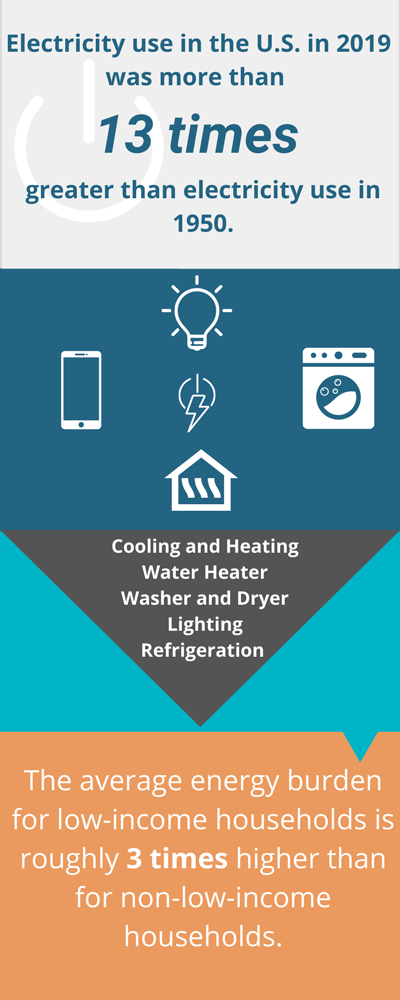
If you’re like most Americans, you probably flip light switches on and off in your home with little thought. A reliable supply of electricity is a basic expectation when looking for a place to call home.
According to the U.S. Department of Energy’s (DOE) Low-Income Energy Affordability Data (LEAD) Tool the national average energy burden for low-income households is 8.6%, three times higher than for non-low-income households which is estimated at 3%. In some areas, depending on location and income, energy burden can be as high as 30%.
Beyond its importance for keeping the lights on, electricity is used for everything from cooling and heating, water heaters, appliances like washers and dryers, refrigeration as well as charging the small electronic devices that we’re so dependent on.
It’s difficult to imagine life without something that we’re all so accustomed to. If you’ve ever experienced a power outage, then you know that the novelty of using candles and lanterns to light your home wears off quickly.
The NeighborRelief platform is helping families avoid electricity shutoffs that would otherwise threaten their stability.

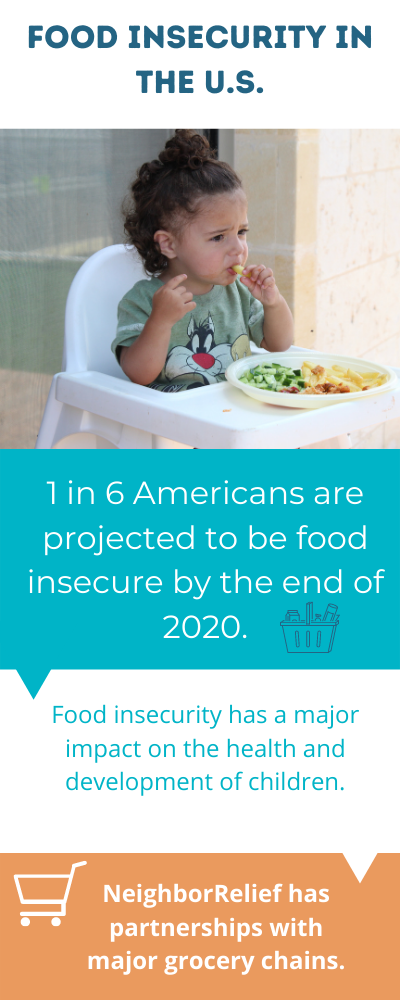
Despite being one of the wealthiest developed countries on earth, the U.S. continues to have a significant food insecurity issue. This was even the case prior to the COVID-19 pandemic. Even though food insecurity was at its lowest level since the Great Recession, it still effected over 35 million people.
The largest hunger-relief organization in the United States, Feeding America, estimates that 17 million people in the U.S. could become food insecure as a result of the pandemic, bringing the total number to more than 54 million people, including 18 million children.
Food insecurity and poor nutrition are associated with several chronic illnesses that put people at higher risk for other illnesses. The food insecurity crisis only exacerbates the disparities in health outcomes for low-income people and children.
NeighborRelief has partnered with major grocery chains to provide direct support in the form of gift cards for neighbors in need.

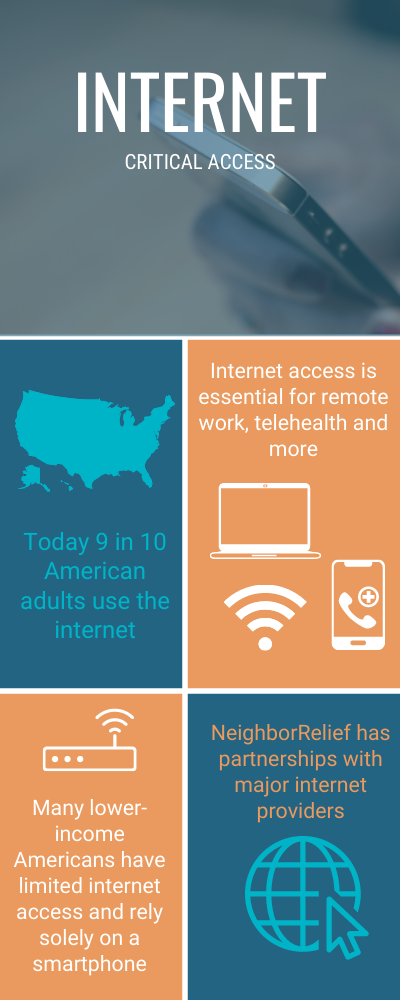
Internet access is now considered to be an essential need for most U.S. households. This fact became glaringly obvious during the COVID-19 pandemic as millions of Americans were forced to shift their daily routines to accommodate remote work, education and telehealth. According to the Pew Research Center, over 50% of Americans say the internet has been essential during the COVID-19 crisis. An additional 34% described it as “important, but not essential.”
For many low-income Americans, the use of a smartphone as their sole source of internet access makes the increased demand for internet bandwidth extremely challenging if not impossible. This lack of in-home internet that’s accessible to the entire household forces some families to make difficult choices about priority.
When surveyed by the Pew Research Center in April 2020, roughly half of Americans with lower incomes were worried about their ability to pay their broadband and cellphone bills over the coming months. In addition, Pew found that roughly one-in-five parents with homebound schoolchildren say it is very or somewhat likely their children will not be able complete their schoolwork because they do not have access to a computer at home (21%) or have to use public Wi-Fi to finish their schoolwork because there is not a reliable internet connection at home (22%). And about three-in-ten parents (29%) report that it is at least somewhat likely their children will have to do their schoolwork on a cellphone.
Similar to smartphone ownership, having and maintaining internet service has a profound impact on a families ability to balance competing needs for work, school and other critical activities. NeighborRelief has included internet as a need category and offers several major internet providers as service providers.

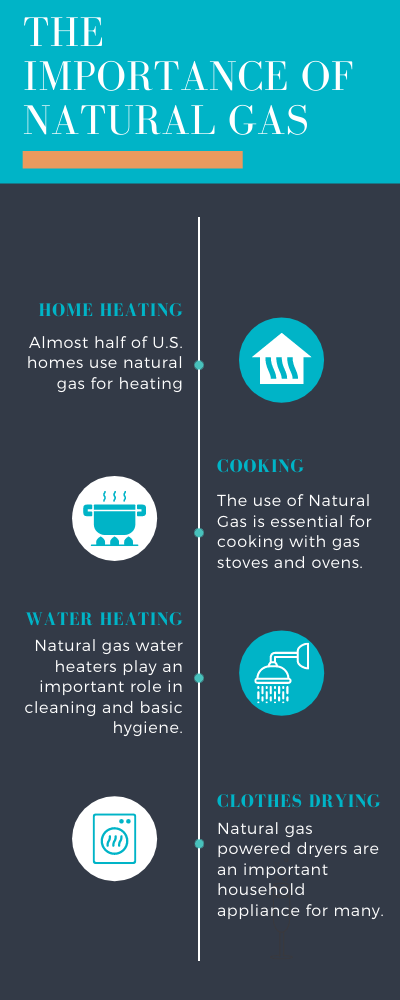
Heating. Cooking. Cleaning. These are some of the most basic household activities directly connected to the use of natural gas.
Nearly half of all U.S. homes use natural gas for heating. The ability to heat your home during winter months is critically important in many regions of the country and Ohio is no exception.
Low-income households spend a larger portion of their income on home energy costs (like natural gas) than other households spend. The term “energy burden” is often used to refer to this measure.
There are major household appliances that use natural gas. Imagine if you were unable to use your gas stove and couldn’t afford to purchase an electric stove replacement. This would likely cause stress and have an impact on the health of your family by not having properly cooked meals.
Gas water heaters are another, often overlooked, household appliance. Hot water is critical for cleaning and for basic hygiene like showering and bathing.

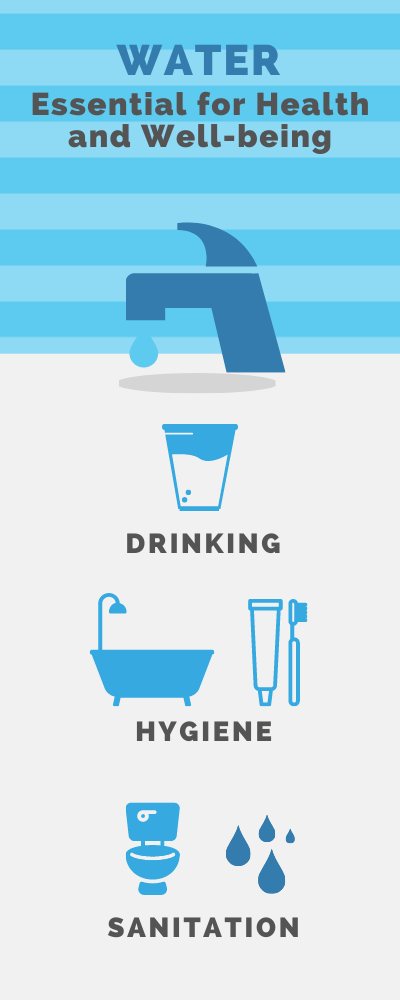
You might only think of water when you’re thirsty, but we use it for a wide range of daily activities that are directly tied to health and overall well-being. Clean water is a right under international law and U.N. declarations.
Despite its critical importance, we often take the availability of clean water for granted in the United States.
Imagine how your daily life would be impacted without water. How would you shower, wash clothing, brush your teeth or flush toilets? Sadly, there are people in the U.S. that do not have running water or indoor plumbing.
Some families cannot afford to keep the water flowing in their homes. For low-income families, even a water bill can pose financial challenges. And having to choose between access to clean water or other basic needs isn’t a choice anyone should have to make.
NeighborRelief is proud to work with water utility companies to support neighbors facing financial hardship who, without assistance, might otherwise have their water shut off.

